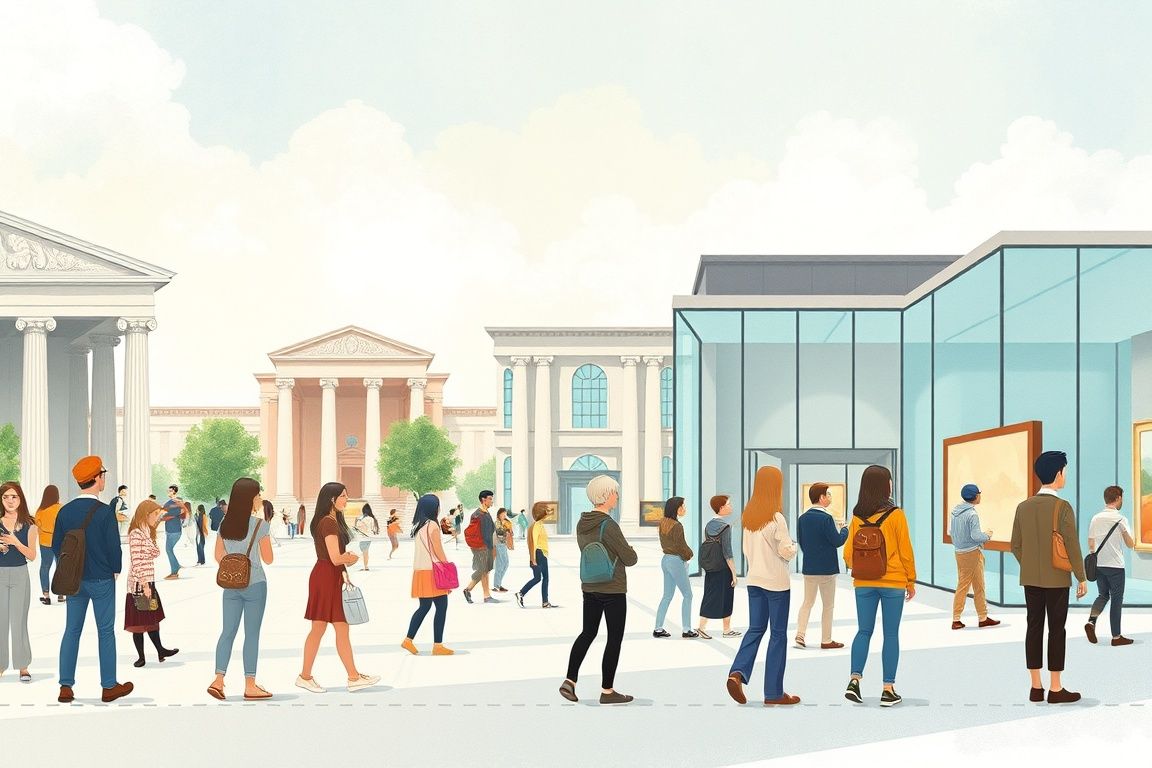The Evolution of Museum Design and Architecture
Why It’s Worth It
Gain a comprehensive understanding of how architectural design influences visitor engagement in museums.
Explore a range of historic and modern examples that provide visual insights into effective museum spaces.
Develop skills and knowledge that are applicable to various fields in art, architecture, and cultural studies.
Your Learning Roadmap
Foundations of Museum Architecture
In this module, learners will explore the origins of museum architecture and its evolution. The module examines early influences and establishes a historical baseline from which modern museums emerged. Participants will gain insights into how museums have served both educational and cultural purposes. The course also introduces key architectural terms and concepts that continue to influence design today. Historical Overview Architectural Principles Role of Museums in Society
Classical and Renaissance Influences
This module delves into the classical origins and Renaissance rebirth that deeply influenced museum design. Participants will learn how principles from these periods are reflected in symmetry, proportion, and narrative structure. The lessons showcase how historical, cultural, and artistic movements guided architects in creating museum spaces. Students will explore contrast and continuity between historical styles and modern requirements. Classical Aesthetics Renaissance Rebirth Continuity and Change
Modernism and the Revolution of Form
This module focuses on the transformational period of modernism in museum design. It examines how architects broke away from past norms to prioritize function and innovation. The lessons explore how modern materials and new construction techniques influenced museum aesthetics. Learners will engage with case studies of iconic modern museums and understand the impact of modern art on built environments. Modernist Principles Innovative Materials and Techniques Iconic Modern Museums
Postmodern and Contemporary Approaches
This module explores how postmodernism and contemporary architectural trends have reshaped the museum experience. Learners will discover the eclectic approaches that challenge modernist conventions. The lessons examine the role of symbolism, technology, and narrative in creating engaging spaces. Students will analyze how contemporary museums balance innovation with respect for tradition. Breaking Conventions Integration of Technology Cultural Narrative in Design
Sustainable and Adaptive Museum Designs
This module investigates how environmental sustainability and adaptive reuse principles are applied in museum architecture. The lessons focus on green building techniques and the repurposing of historical structures. Participants will learn how sustainability not only benefits the environment but also enhances visitor experience. The course analyzes case studies where museums successfully merged heritage with modern eco-friendly designs. Sustainable Architecture Practices Adaptive Reuse of Heritage Buildings Enhancing Visitor Experience
The Future of Museum Architecture
The final module presents a vision for the future of museum design and architecture. It reviews emerging trends and technological advancements that are influencing new forms of engagement. The lessons highlight digital integration, flexible spatial planning, and innovative design concepts. Learners are invited to predict future developments and consider how cultural narratives may evolve through architecture. Emerging Trends Digital Integration Predicting Future Designs
What Users Are Saying
All You Need to Know
Explore Museum Design Now
Real-time engagement with your AI tutor for immediate feedback.
Flexibility to learn at your own pace, anytime and anywhere.
Interactive chat-based lessons make learning dynamic and engaging.
Access to diverse case studies of iconic museums for practical insights.
Deep dive into historical and contemporary design principles.
Personalized assistance with your questions and exercises.

